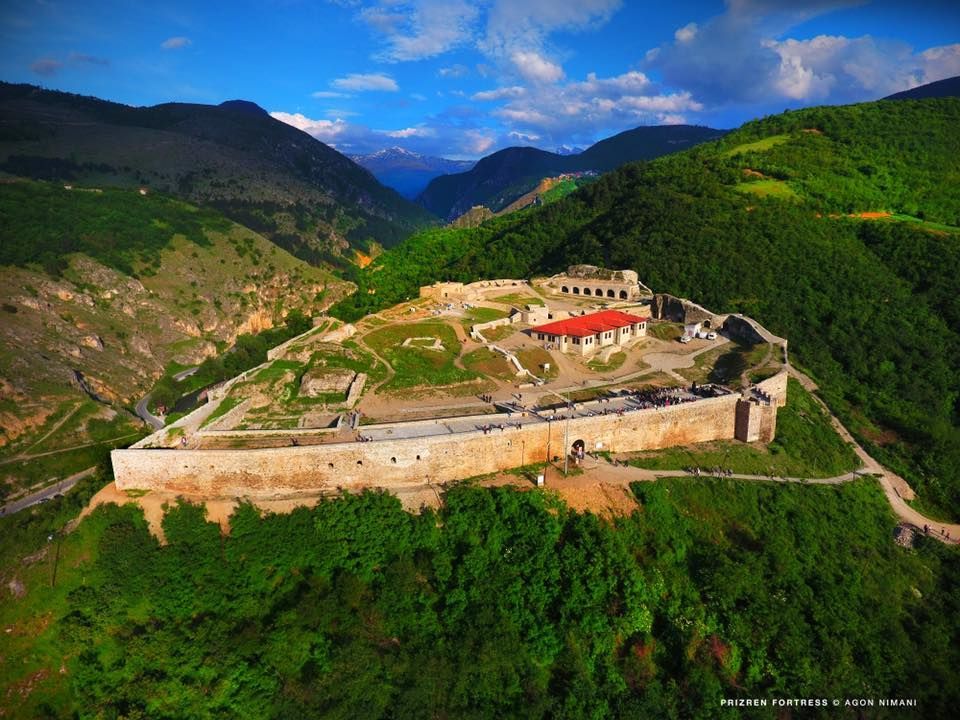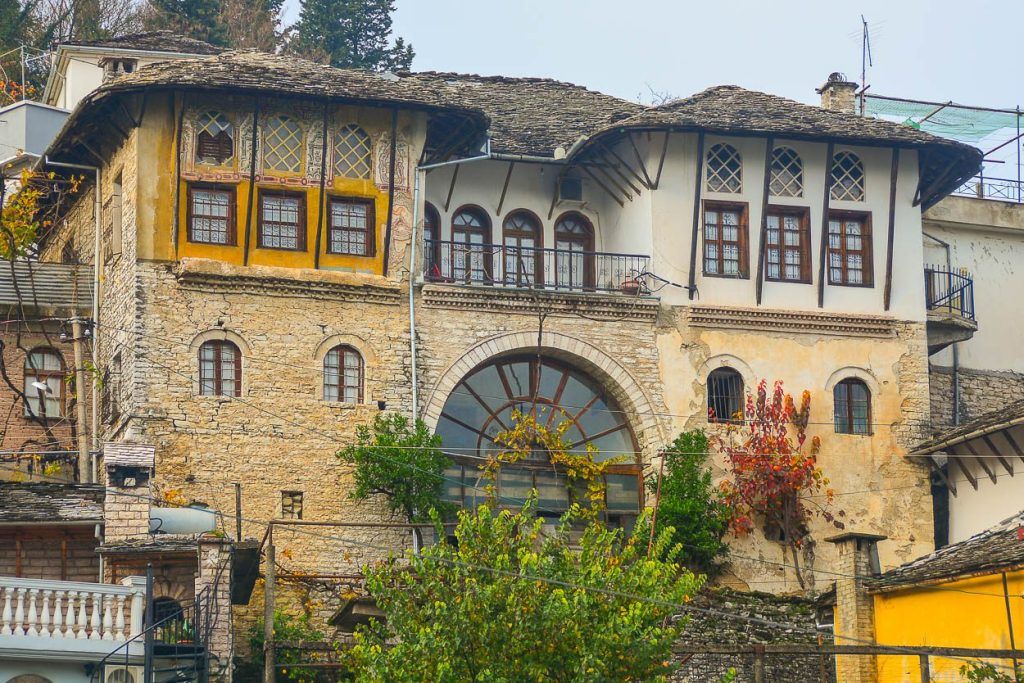My trip to Gjirokastra began with a mixture of expectation and curiosity. He had heard of his nickname, “the city of stones,” but he was not prepared for the majesty he would find. When I arrived, the first thing that struck me was the unique architecture of its buildings. Each house and street seemed to tell its own story, some of courage and others of love.

Walking through Gjirokastra is like going back in time. The city preserves its medieval structure, and its inhabitants keep the traditions alive. I was surprised how, despite the modernity that advances, Gjirokastra preserves its essence with pride and dignity.
One of the most fascinating aspects of Gjirokastra is its rich cultural heritage. The city is not only a living museum of Ottoman architecture, but also a center of music and folk art. During my stay, I had the opportunity to witness an iso-polyphony performance, declared Intangible Cultural Heritage of Humanity by UNESCO. This unique musical experience was a reminder of the deep cultural roots of the city.
In addition to its culture, Gjirokastra captivated me with its natural environment. Surrounded by mountains, the city offers numerous opportunities to explore nature. The walks along nearby trails allowed me to appreciate the beauty of the Albanian landscape, a combination of green valleys and crystal clear waters.
Tip for travelers:
Be sure to visit the Gjirokastra Bazaar. It is the perfect place to immerse yourself in local life and find unique handicrafts. Here, every purchase feels like taking home a piece of Gjirokastra’s story.
My introduction to Gjirokastra was just the beginning of an unforgettable adventure. The city taught me the importance of preserving our heritage and showed me the beauty of simplicity.
Without a doubt, it is a destination that every lover of history and culture must experience.
How to get to Gjirokastra from Tirana
Starting the journey from Tirana to Gjirokastra was an exciting decision. The Albanian capital, vibrant and full of life, was the perfect starting point. To get to Gjirokastra, I opted for the road, a choice that allowed me to enjoy the Albanian landscape in all its splendor.
The most common route is to take a bus or van, known locally as a “van”. These vehicles regularly leave Tirana and offer an economical and authentic way to travel. The duration of the trip is approximately four hours, during which time I was able to contemplate the diversity of the Albanian terrain, from plains to mountains.
For those who prefer a more personalized option, renting a car is an excellent alternative. This option gave me the freedom to explore at my own pace, making stops in small towns and panoramic points along the way. The roads are mostly in good condition, although I recommend caution in mountainous sections.
If you choose to rent a car, make sure you have a map or GPS at hand. Although signage is adequate, navigating rural roads can be a challenge.
Getting to Gjirokastra is also possible on an organized tour. Many agencies in Tirana offer day trips or packages that include transportation and a guide. This option is ideal for those looking for a more structured and enriching experience, with the advantage of learning about the history and culture of the region from a local expert.
Regardless of the means of transport chosen, the trip to Gjirokastra from Tirana is an adventure in itself. The natural beauty of Albania, combined with the expectation of discovering Gjirokastra, makes the journey an integral part of the travel experience.
Where to stay in Gjirokastra
Hotel Kodra: This 3-star hotel is located in the center of the city, within walking distance of many attractions. It offers comfortable and clean rooms, as well as a buffet breakfast. Price: From 40€/night.

Gjirokastra Apartments: These apartments are located in the center of the city and offer a variety of options for different budgets. Price: From 25 €/night.
Traditional Albanian cuisine
Kodra e Kuqe: This restaurant is located in a traditional Ottoman house and offers a wide variety of Albanian dishes.
Restorant Zekate: This family restaurant offers homemade Albanian dishes in a cozy atmosphere.
Shtëpia e Gjatë: This restaurant is located in a traditional Albanian house and offers a unique gastronomic experience.
Exploring Gjirokastra
Once in Gjirokastra, the excitement of exploring this stone city was palpable. My first steps led me to its iconic fortress, which rises majestically over the city. The view from above was simply impressive, offering a panorama of stone roofs that extended as far as the view reached. The fortress, rich in history, houses museums and artifacts that narrate the times that have survived. Going through it was like walking through the pages of a history book.
A tip for those who visit the fortress is to take their time. Every corner has a story to tell, from the old canyons to the concert stages that now host cultural events. The energy of the place is unique, mixing the past with the present in a way that only Gjirokastra knows how to do.
After the fortress, I headed to the old town. The cobbled streets guided me through a labyrinth of historic houses, each with its own personality. Some of these houses have been transformed into museums, opening their doors to visitors to show what life was like in past centuries.
The Skenduli House and the Zekate House are two outstanding examples that I highly recommend. Visiting them offered me a window to the soul of Gjirokastra, allowing me to appreciate the architecture and the traditional way of life.
For literature fans, Ismail Kadare’s birthplace, converted into a museum, is a mandatory stop. This famous Albanian writer has captured the essence of Gjirokastra in his works, and exploring his home was like going into his narratives. It was a deep and personal connection with Albanian culture, enriching my experience in the city.
No less important is the old bazaar. Although smaller than at its peak, the bazaar is still a center of activity and commerce. Local sellers offer a variety of crafts, from textiles to silver jewelry, each piece with its own history. Here, each purchase supports the local economy and helps preserve the region’s artisanal traditions.
Traveler advice: Take the opportunity to talk to artisans and merchants. Their stories and hospitality add a rich layer of authenticity to the shopping experience.
My exploration of Gjirokastra was a total immersion in its history, culture and natural beauty. The city not only taught me about Albania, but also allowed me to meet its people, whose warmth and hospitality I will never forget. Gjirokastra is a living testimony of resilience and cultural richness, a place that will remain in my heart long after I have left.
Villages Near Gjirokastra to Explore
Exploring the villages near Gjirokastra is immersing yourself in the tranquility and natural beauty of Albania. These small towns offer an authentic vision of Albanian rural life, where traditions are lived day by day. Here, I will recommend some hidden gems that are worth a visit.

- Labova and Kryqit
This small village is famous for housing one of the oldest churches in Albania, the Church of Santa Maria, which dates from the 13th century. Labova e Kryqit is the perfect place for those interested in sacred architecture and religious traditions. The tranquility of the place and the hospitality of its inhabitants make this visit a charming experience.
- Antigonea
Founded in the 3rd century BC by King Pyrrhus of Epirus, Antigonea was an important city in antiquity. Today, its ruins offer a fascinating glimpse into the past. Located in an archaeological park, the visit to Antigonea is not only a journey through history, but also an opportunity to enjoy stunning natural landscapes.
- Dhoksat
Dhoksat is a charming village known for its impressive natural environment and panoramic views of the surrounding mountains. It is an excellent starting point for walks and explorations in nature. The village also offers a unique view of everyday life in the rural areas of Albania, with well-preserved traditions and great hospitality.
- Qeparo
Although a little further away, Qeparo is a must-see for those willing to explore beyond. Divided into Qeparo Fushë (low) and Qeparo Malë (high), this coastal village offers both beautiful beaches and a charming old town on the hill. The combination of blue sea and traditional architecture creates an unforgettable experience.
- Libohova
Libohova, located near Gjirokastra, is a village with a rich historical heritage. Here you can visit the castle of Libohova, which, although in ruins, offers spectacular views of the region. The village is also home to the tomb of Ali Pasha of Tepelena, an important Albanian historical figure.
Each of these villages offers something unique, from ancient ruins to impressive natural landscapes and a deep immersion in the local culture. I recommend taking at least a day exploring these areas near Gjirokastra to complement your experience in Albania.



